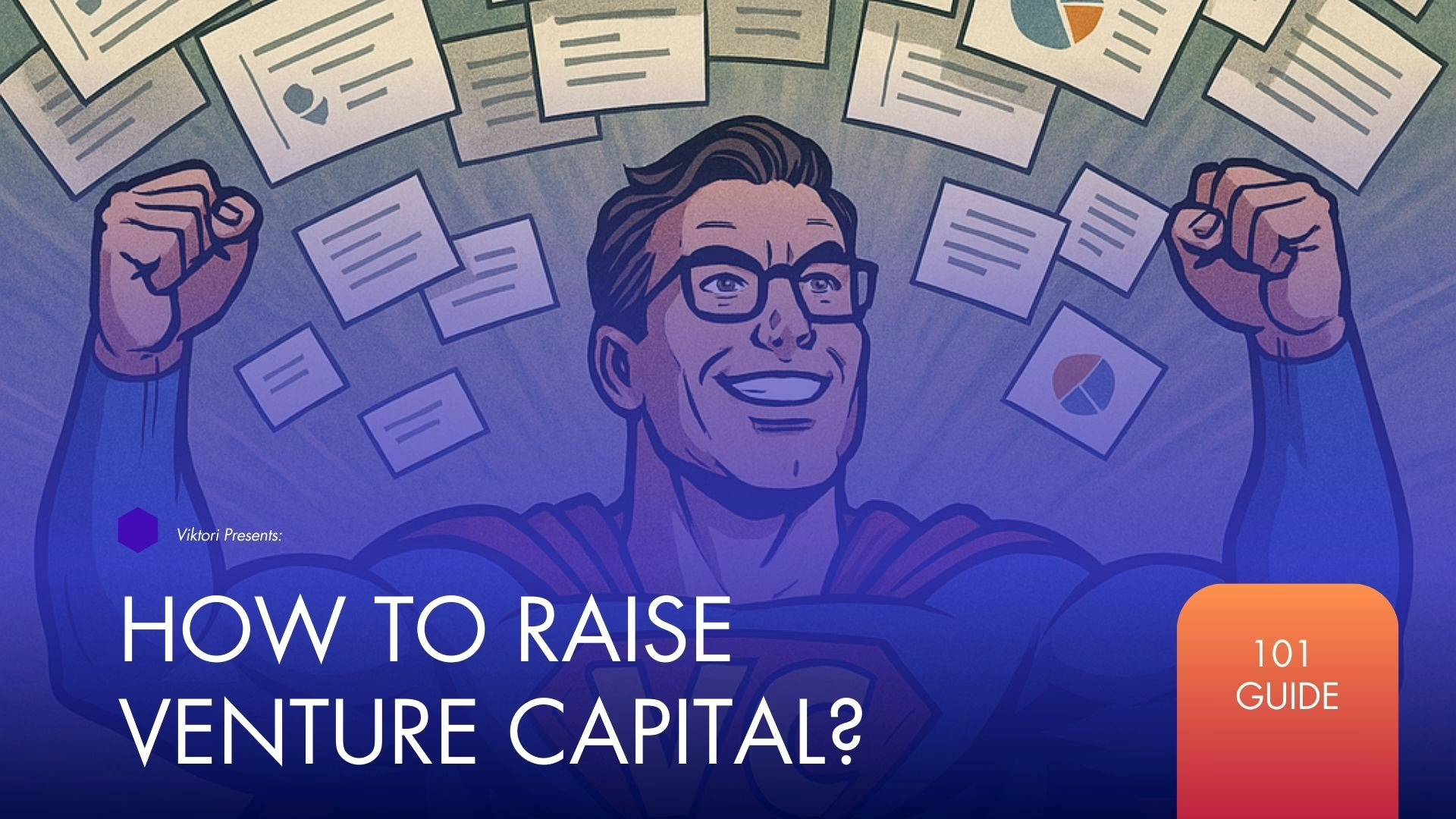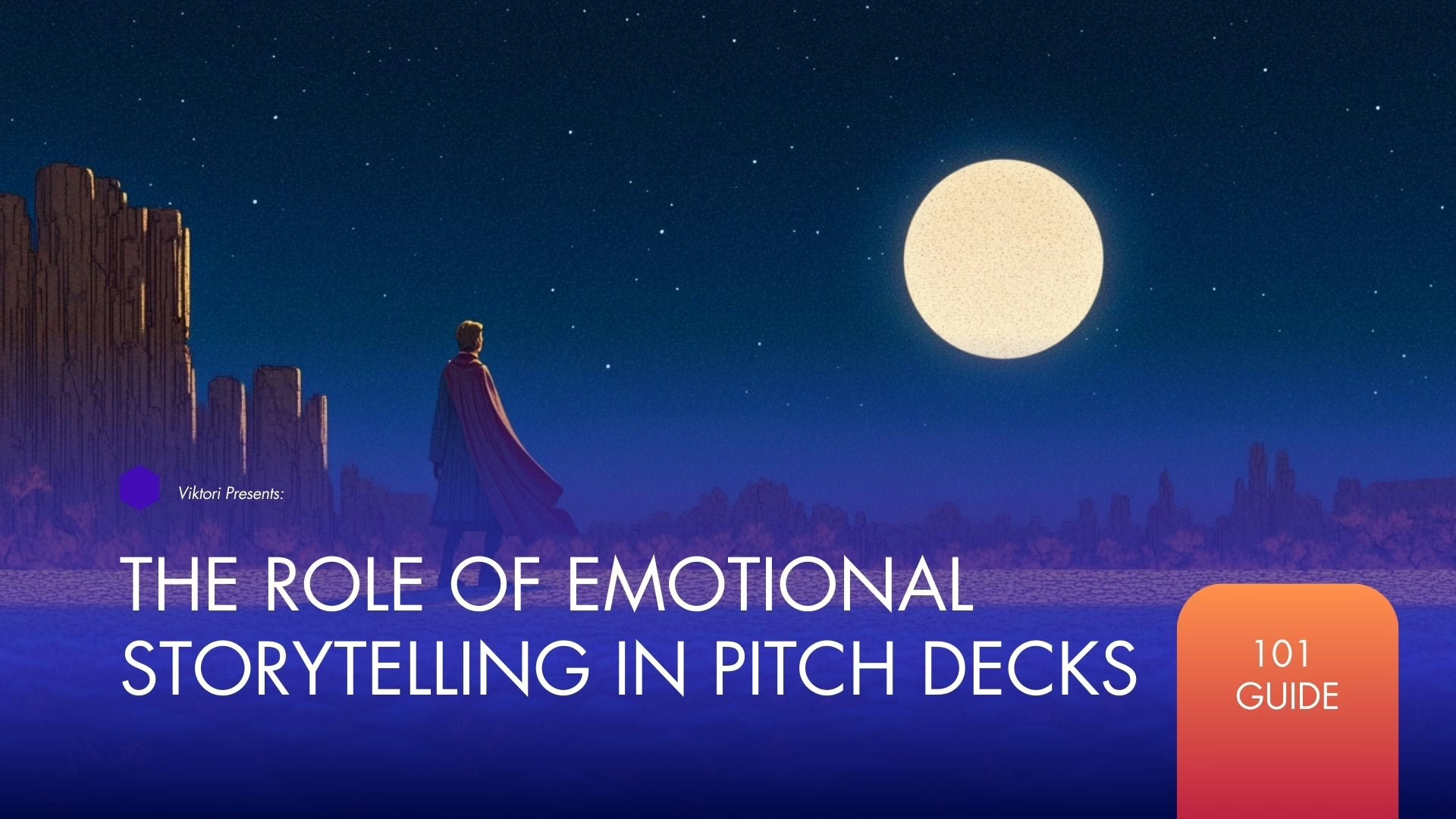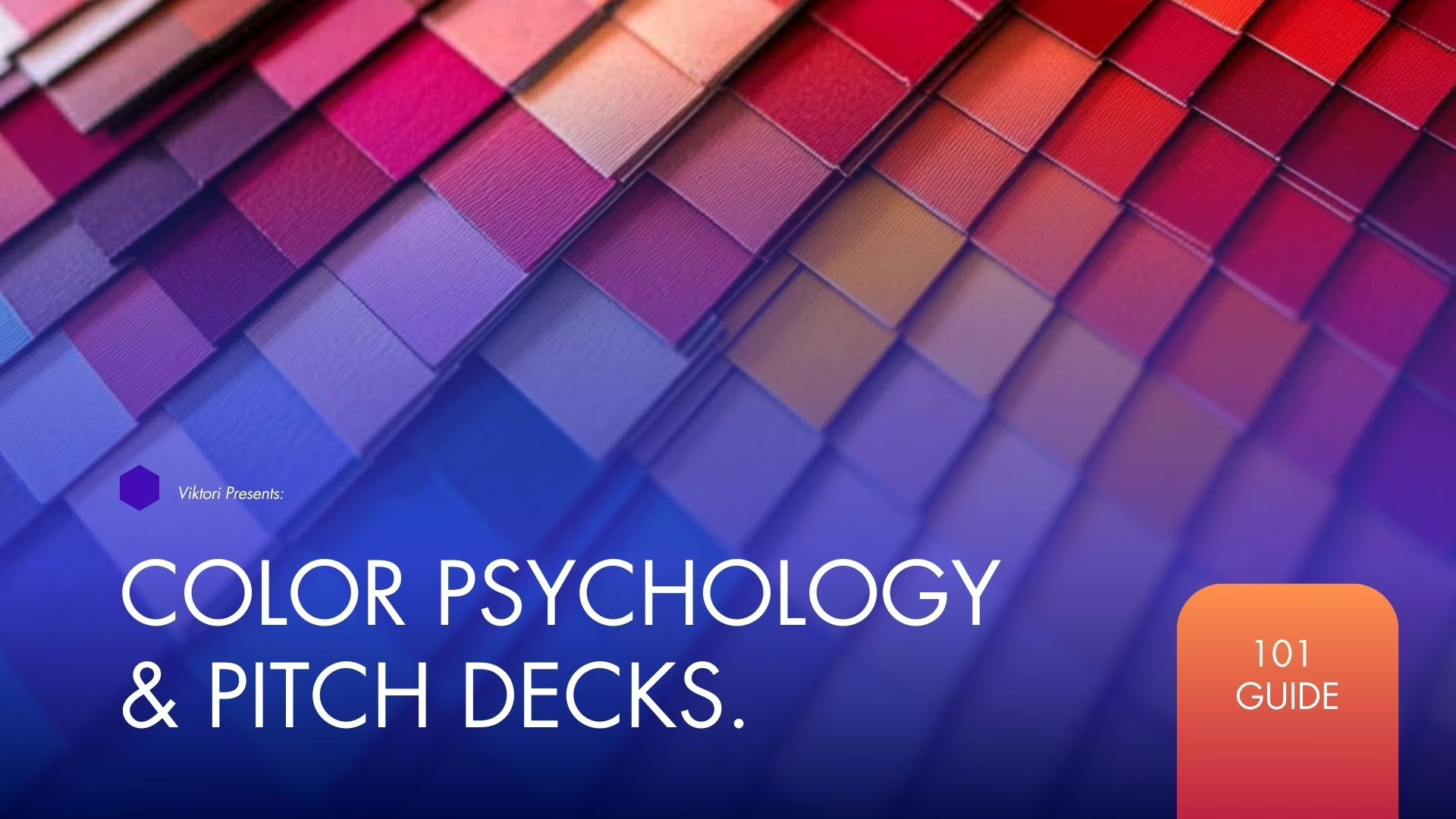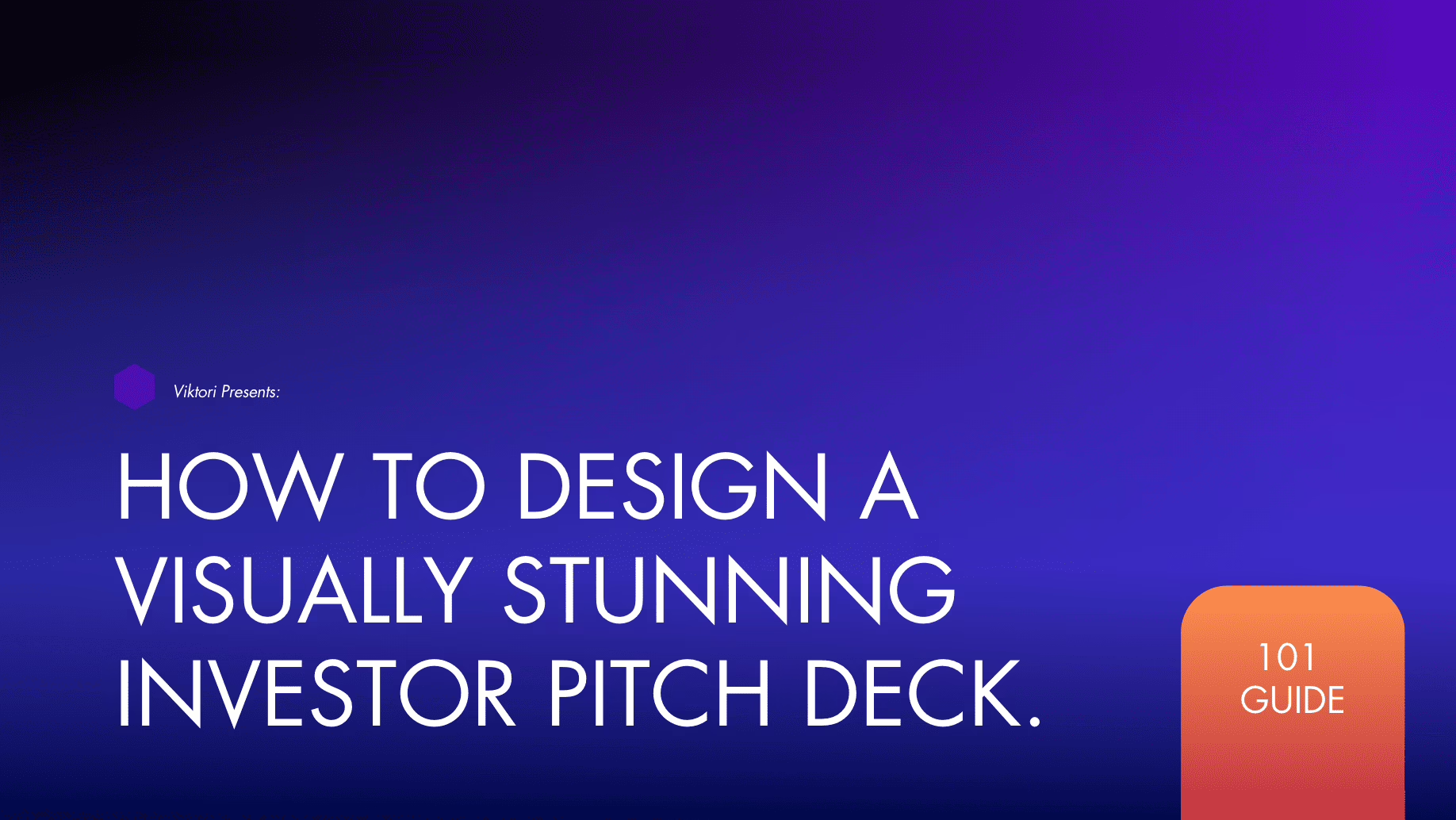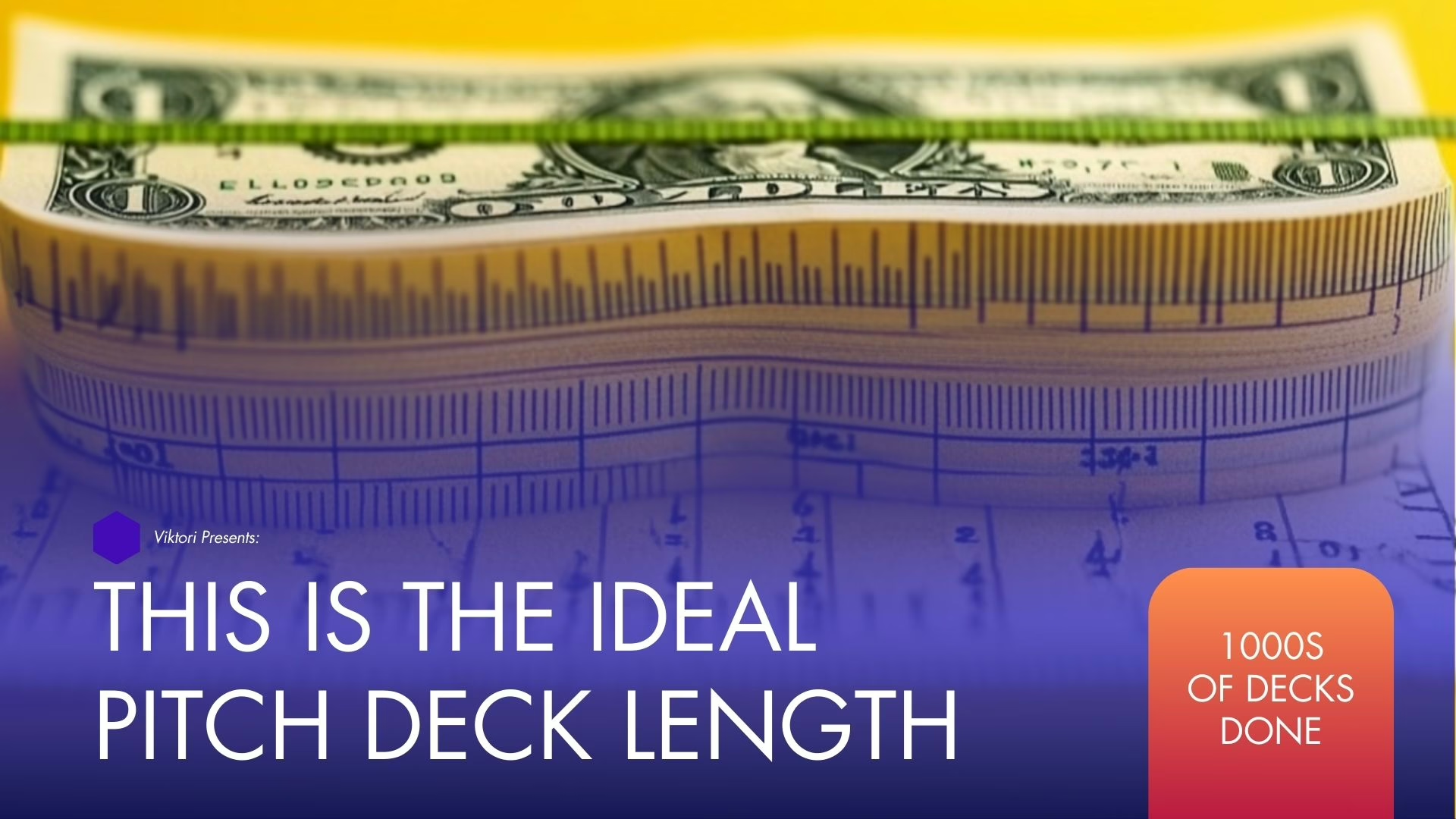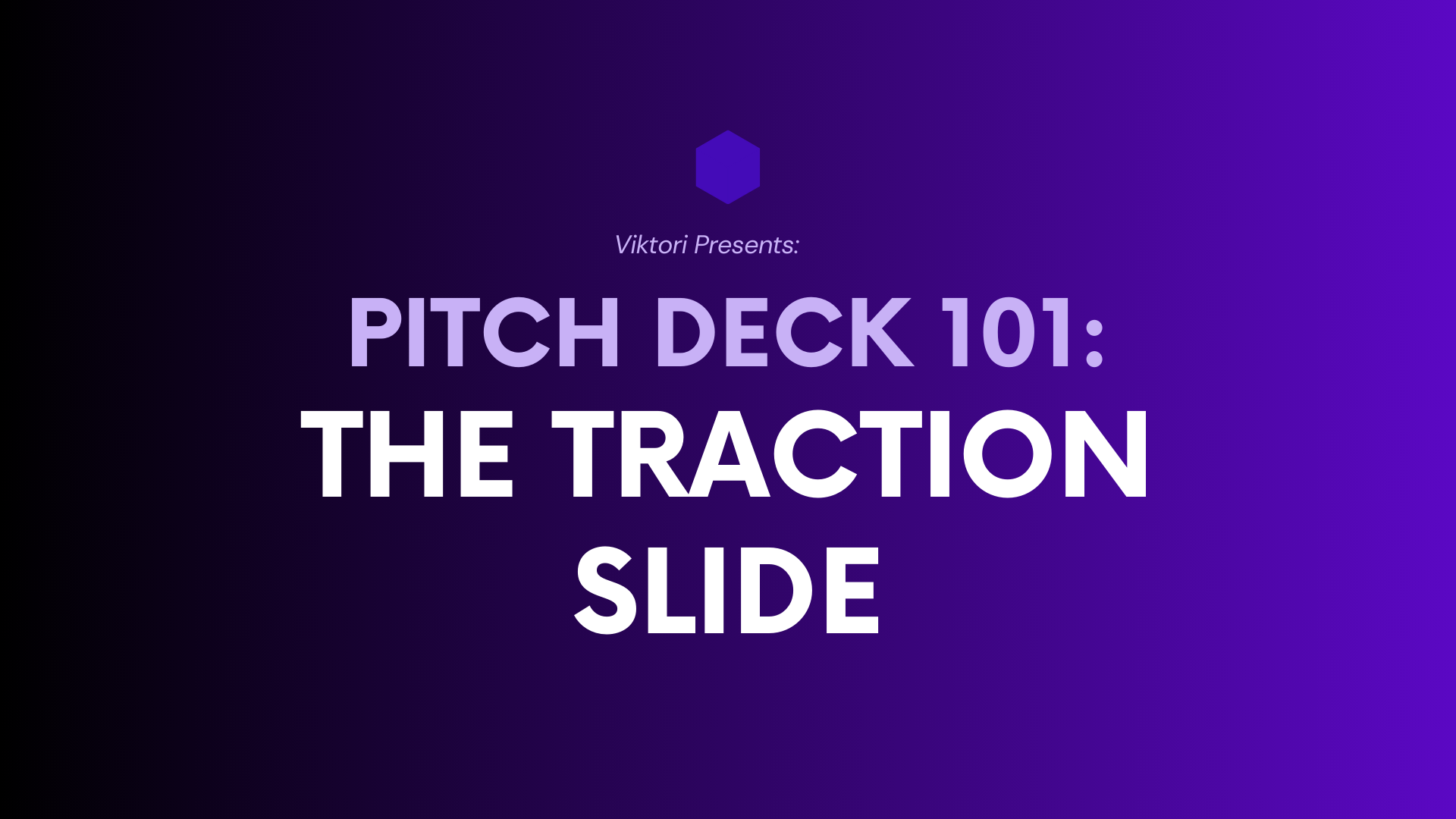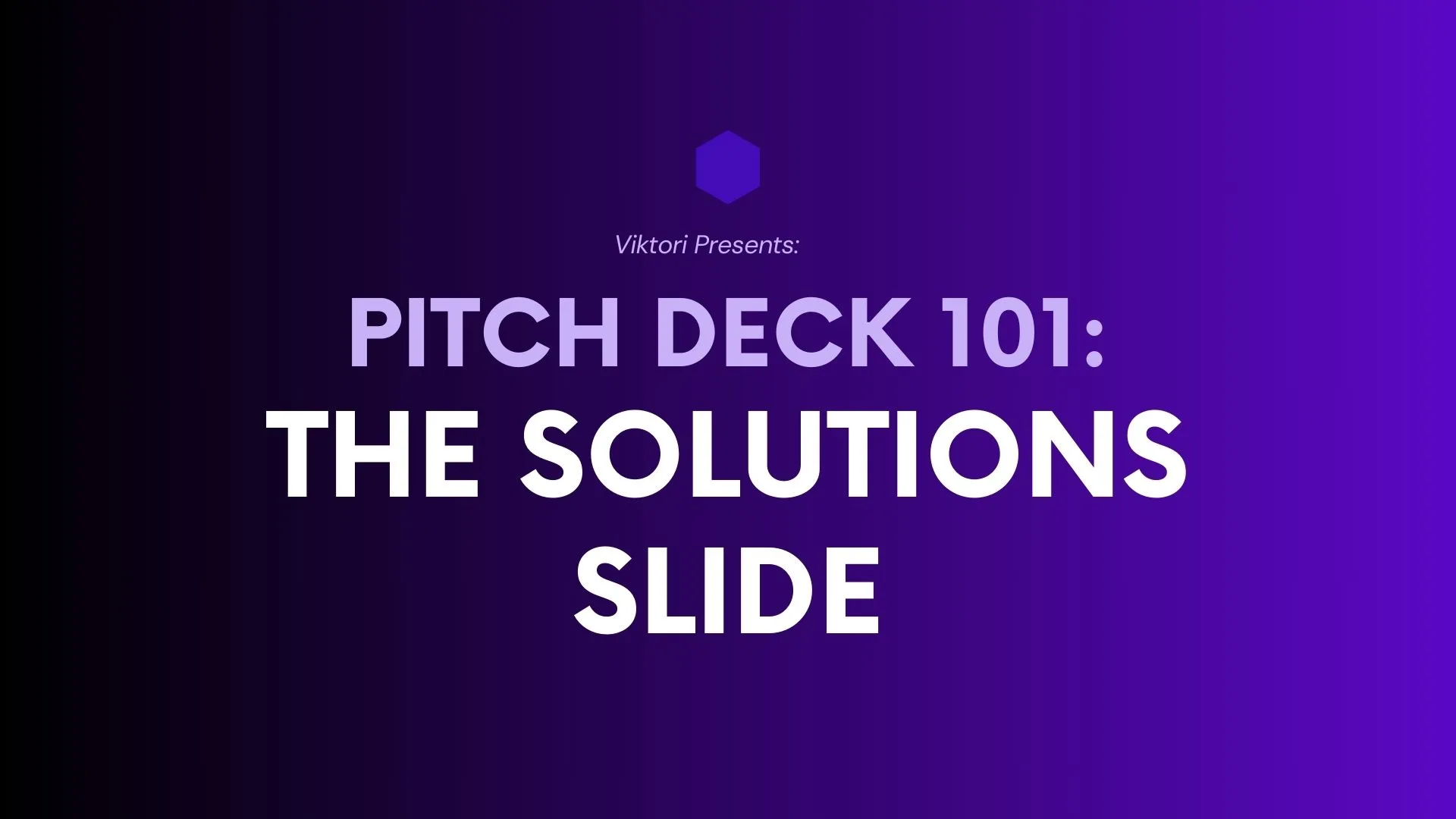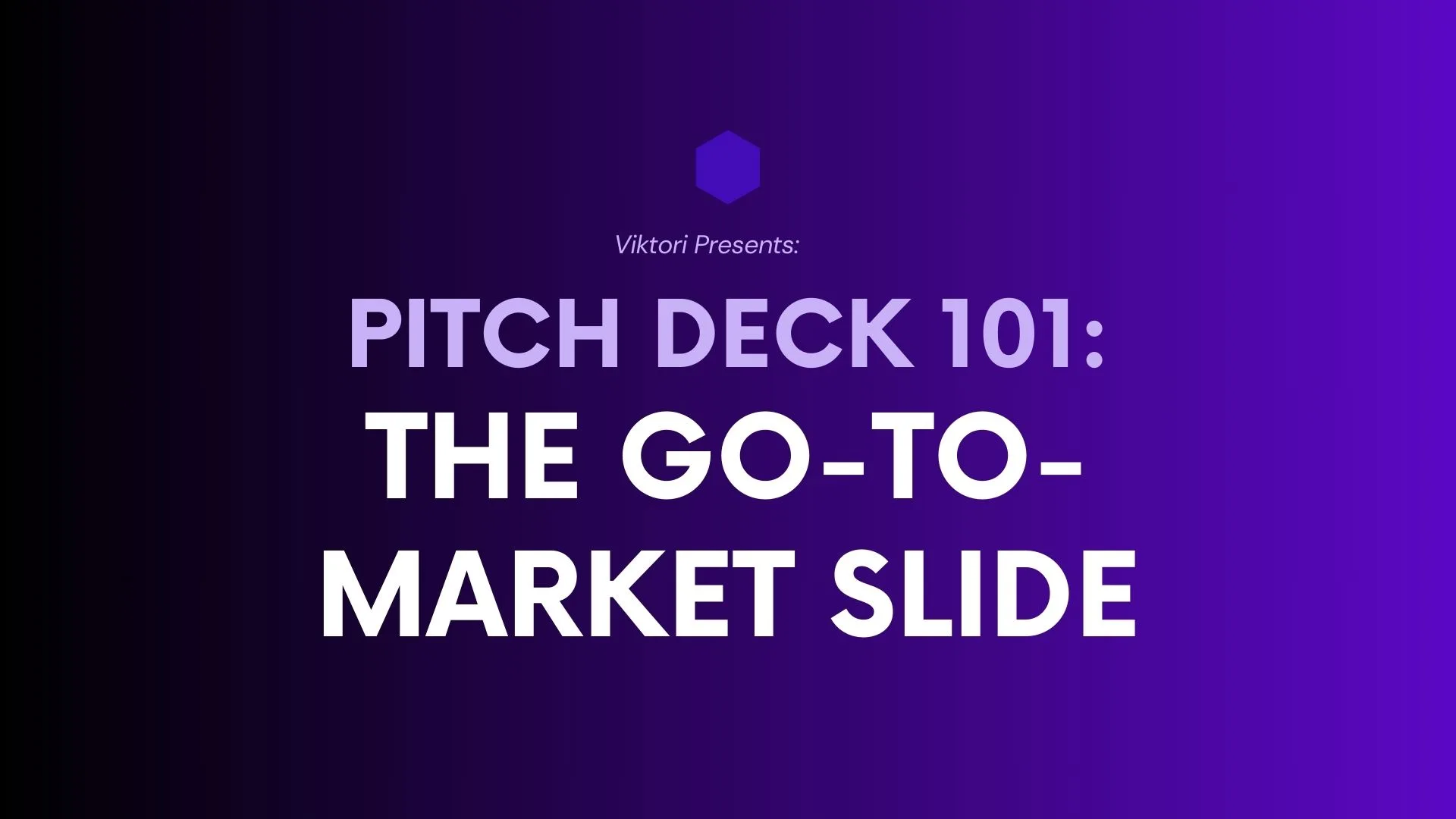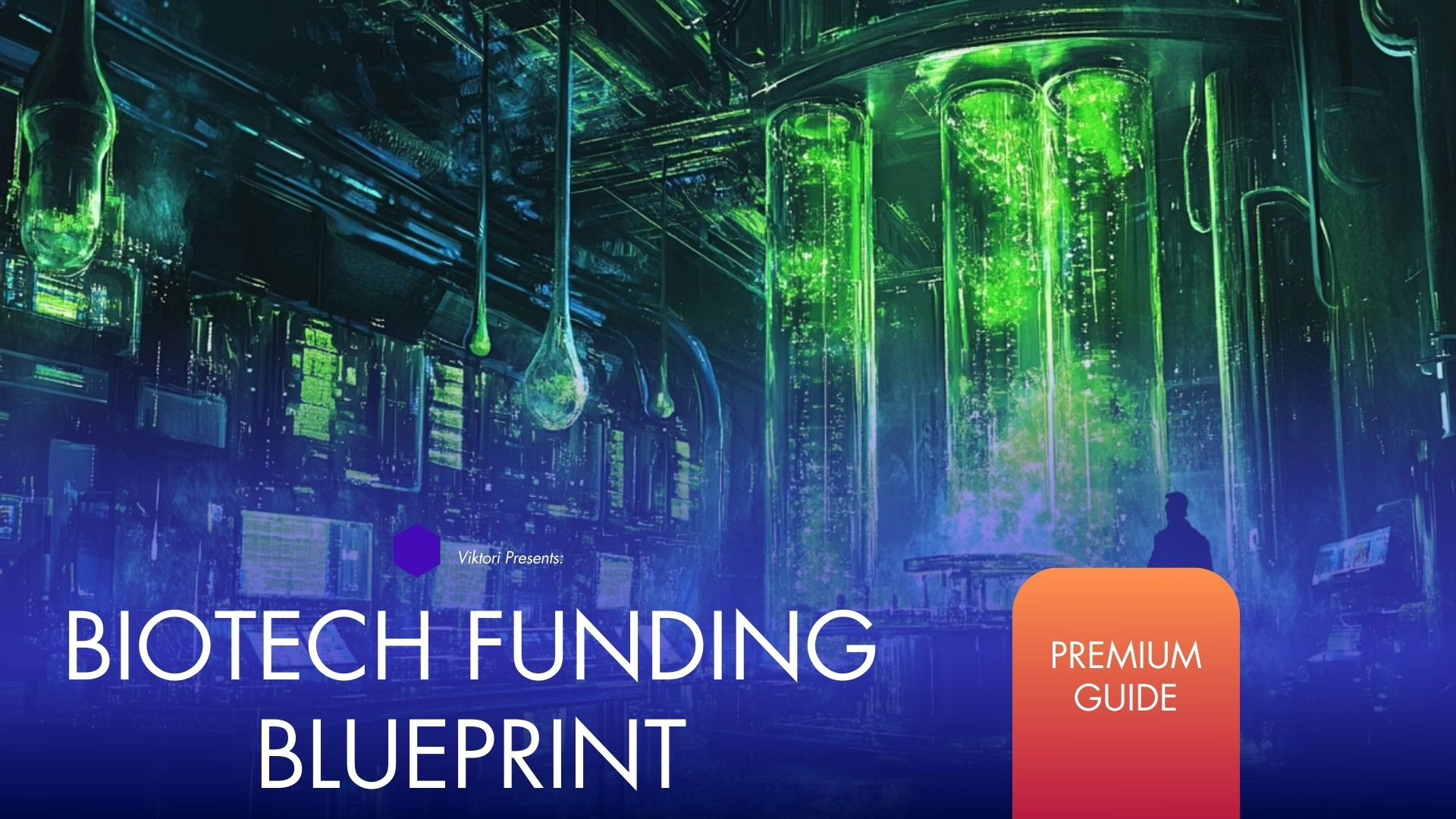

Author: Viktor
Pitch Deck Expert. Ex Advertising. Founder of Viktori. $500mill In Funding. Bald Since 2010.
The 12 Slide Biotech Pitch Deck Template
Slide 1: Elevator Pitch (Problem + Solution)
Objective:
Capture investor interest within seconds by clearly stating the problem and your unique solution.
Structure:
- The Problem (Name the Enemy)
- A concise, high-impact statement about the problem in the biotech or healthcare industry.
- Example: “Despite decades of research, over 70% of rare diseases still have no approved treatment, leaving millions without hope.”
- Your Solution (What You Offer)
- A clear, one-line summary of what your biotech innovation does.
- Example: “Our gene-editing platform leverages CRISPR technology to create personalized therapies for rare genetic disorders.”
- The Big Impact (Why It Matters)
- A high-level, quantified benefit of your solution.
- Example: “Our approach reduces treatment costs by 40% and speeds up clinical trials by 50%, making lifesaving drugs accessible to millions faster.”
Visuals:
- A high-quality, conceptual image (e.g., DNA sequencing, lab work, biotech innovation).
- A simple headline + subheadline with minimal text.
Slide 2: Investor Highlights
Objective:
Provide a compelling snapshot of why this investment opportunity is attractive.
Structure:
- Market Size & Opportunity
- Example: “$75B+ market in personalized medicine, growing at 12% CAGR.”
- Breakthrough Technology
- Example: “First-in-class CRISPR therapy with AI-driven target selection.”
- Regulatory & IP Strength
- Example: “3 patents granted, 2 pending. FDA Fast Track designation secured.”
- Clinical or Preclinical Success
- Example: “Preclinical studies show 90% efficacy in gene correction with no off-target effects.”
- Experienced Leadership Team
- Example: “Founded by leading geneticists and ex-Pfizer R&D executives.”
- Scalability & Exit Potential
- Example: “Strong M&A interest from major pharma players and projected IPO within 5 years.”
Visuals:
- Bullet points (clean and to the point).
- Market size and growth trend chart.
- Logos of strategic partners or endorsements.
Slide 3: The Problem & Urgency
Objective:
Highlight the pain points and create a sense of urgency around the problem.
Structure:
- What’s Broken? (The Status Quo)
- Example: “Current treatments for rare genetic disorders are either non-existent or prohibitively expensive, costing over $500K per patient annually.”
- The Human & Economic Toll
- Example: “Patients endure years of misdiagnosis, ineffective treatments, and deteriorating quality of life. Healthcare systems spend billions on managing symptoms instead of treating the root cause.”
- Why Now? (The Urgency Factor)
- Example: “Recent advancements in gene therapy and AI-driven drug discovery mean we finally have the tools to tackle these diseases effectively.”
Visuals:
- A patient-centric image to create emotional connection.
- Data visualization showing increasing prevalence of rare diseases or the economic burden.
Slide 4: Market Opportunity
Objective:
Demonstrate the scale of the opportunity and the potential for high returns.
Structure:
- Total Addressable Market (TAM)
- Example: “The global market for genetic therapies is projected to reach $150B by 2030.”
- Serviceable Available Market (SAM)
- Example: “We are initially targeting the $25B rare genetic disease market, growing at 18% CAGR.”
- Serviceable Obtainable Market (SOM)
- Example: “By focusing on the top 3 untapped genetic conditions, we estimate a $5B+ revenue opportunity within the next 5 years.”
- Industry Trends Favoring Growth
- Example: “Regulatory bodies are accelerating approval pathways for precision medicine, and major pharma companies are increasing M&A activity in biotech.”
Visuals:
- A TAM/SAM/SOM pie chart to visually depict the market segmentation.
- A line graph showcasing market growth trends.
Slide 5: The Science & Unique Solution
Objective:
Explain your biotech innovation in a way that is clear, yet compelling.
Structure:
- How It Works (Simplified Scientific Explanation)
- Example: “Our proprietary AI-driven platform identifies genetic mutations with 99% accuracy and applies CRISPR edits with unparalleled precision.”
- Key Differentiators (What Makes It Special?)
- Higher efficacy
- Faster development timeline
- Lower costs compared to existing therapies
- Scientific Validation & Early Results
- Example: “In vivo studies show 90% success in correcting genetic mutations, with minimal immune response.”
- Intellectual Property & Competitive Edge
- Example: “We hold exclusive patents on our AI-driven target identification and delivery mechanism.”
Visuals:
- A simple before & after graphic explaining how the technology works.
- Comparison table showing how this solution is superior to competitors.
Slide 6: Competitive Advantage & IP Strategy
Objective:
Show why competitors cannot easily replicate what you’re doing.
Structure:
- How You Compare to the Competition
- Example: “Unlike conventional gene therapies that struggle with off-target effects, our AI-driven approach reduces errors by 80%.”
- Intellectual Property Protection
- Example: “3 issued patents on delivery mechanism and gene-editing accuracy, with 2 more in process.”
- Barriers to Entry
- Proprietary data & AI models trained on unique datasets.
- Established partnerships with top-tier research institutions.
- Regulatory advantages (e.g., Fast Track designation from FDA).
- Competitive Threats & How You Mitigate Them
- Competitor X: “Focused on different genetic indications, does not address the same disease areas.”
- Competitor Y: “Limited by outdated delivery methods, struggles with immune response issues.”
Visuals:
- Competitive landscape matrix (your company vs. competitors).
- IP strategy roadmap showcasing issued patents and future filings.
Slide 7: Business & Revenue Model
Objective:
Demonstrate how the business will generate revenue and achieve financial sustainability.
Structure:
- Revenue Streams
- Direct Drug Sales: Pricing model for therapies.
- Licensing & Royalties: Partnering with big pharma for commercialization.
- Government Grants & Research Funding: Non-dilutive funding opportunities.
- Strategic Partnerships & Joint Ventures: Co-developing or co-marketing treatments.
- Pricing & Reimbursement Strategy
- Example: “We will work with insurers to ensure broad market adoption and reimbursement approval, similar to how leading gene therapies have been integrated into healthcare systems.”
- Scalability & Growth Plan
- Expansion into additional indications beyond the initial target disease.
- Global market expansion strategy.
- Projected Financial Growth
- Estimated revenue in 3-5 years, based on licensing deals, product launch timelines, and market penetration.
Visuals:
- Revenue model diagram showing various income streams.
- Projected revenue growth chart with 3-5 year forecast.
Slide 8: Clinical Trials & Regulatory Pathway
Objective:
Showcase your regulatory strategy and how you mitigate the risk of clinical development.
Structure:
- Clinical Trial Status & Roadmap
- Example:
- Preclinical – Completed animal studies with strong efficacy.
- Phase 1 – Demonstrating safety in humans (projected start: Q3 2025).
- Phase 2 – Proving efficacy (projected start: Q2 2026).
- Phase 3 – Large-scale trials and FDA submission (2028).
- Example:
- Regulatory Milestones & FDA Strategy
- Fast Track, Breakthrough Therapy, or Orphan Drug Designation.
- Example: “Our therapy qualifies for Orphan Drug Designation, which grants market exclusivity for 7 years post-approval.”
- Risk Mitigation Plan
- Strategies to de-risk clinical trials (e.g., strong preclinical data, collaboration with regulatory consultants, adaptive trial designs).
- Example: “We have secured advisory meetings with the FDA to ensure a clear regulatory pathway.”
Visuals:
- Timeline of clinical development & approval milestones.
- Regulatory designation benefits table (e.g., Fast Track = shorter review times).
Slide 9: Traction & Milestones
Objective:
Provide proof that the company is making significant progress.
Structure:
- Major Achievements to Date
- Example:
- “Raised $5M in non-dilutive NIH funding for preclinical development.”
- “Completed animal studies showing 90% gene correction success rate.”
- “Signed partnership with top-tier research institution for clinical trial execution.”
- Example:
- Strategic Partnerships & Collaborations
- Big pharma partnerships.
- University & research collaborations.
- Government agency involvement.
- Upcoming Milestones (Next 12-24 Months)
- Example:
- “IND filing submission with the FDA (Q4 2025).”
- “Completion of Phase 1 trial (Q2 2026).”
- Example:
Visuals:
- Timeline with key milestones & upcoming goals.
- Logos of research partners, investors, and collaborators.
Slide 10: Go-to-Market Strategy
Objective:
Explain how the company will successfully commercialize its biotech innovation.
Structure:
- Initial Market Entry Strategy
- Direct Sales to Specialty Clinics: Targeting hospitals and clinics specializing in genetic disorders.
- Pharmaceutical Partnerships: Licensing deals with pharma companies for late-stage clinical development and sales.
- Scaling & Market Expansion
- Expanding into additional indications (e.g., from rare diseases to broader applications).
- Global expansion strategy (e.g., “Phase 3 trials in both U.S. and Europe to ensure international market access.”)
- Regulatory & Reimbursement Strategy
- Working with payers and insurers to ensure coverage & reimbursement.
- Example: “We will work with Medicare, Medicaid, and private insurers to secure market access post-approval.”
- Market Adoption & Customer Targeting
- Key opinion leaders (KOLs), hospital adoption programs, and physician education.
Visuals:
- Go-to-market roadmap (initial launch, expansion phases).
- Graph showing projected market penetration & revenue growth.
Slide 11: The Team
Objective:
Demonstrate that you have a world-class team capable of executing the vision.
Structure:
- Founders & Leadership Team
- Brief, impactful bios highlighting relevant experience.
- Example:
- Dr. Jane Smith (CEO) – 20+ years in biotech leadership, ex-Pfizer R&D.
- Dr. Mark Johnson (CSO) – Pioneer in gene editing, published 50+ papers in Nature & Science.
- Scientific & Advisory Board
- Highlight leading biotech investors, regulatory experts, and industry veterans supporting the company.
- Example: “Our advisory board includes former FDA regulatory officers and leading oncologists in gene therapy.”
- Hiring Plan & Talent Strategy
- Roles needed for scaling (e.g., regulatory affairs, commercialization team).
Visuals:
- Headshots + short bios (1-2 lines per person).
- Logos of past companies they’ve worked at (Pfizer, NIH, etc.).
Slide 12: Funding Ask & Use of Funds
Objective:
Clearly state how much capital you are raising and how it will be deployed.
Structure:
- Funding Ask & Stage
- Example:
- “We are raising $20M in Series A funding to advance our lead therapy through Phase 1 clinical trials.”
- Example:
- Allocation of Funds
- Example:
- 50% – Clinical Trials (Phase 1 & regulatory approvals)
- 25% – R&D & Pipeline Expansion
- 15% – Hiring & Infrastructure
- 10% – IP & Legal Costs
- Example:
- Expected Runway & Next Milestone
- How long the funding will last (e.g., “This will provide a 24-month runway, covering completion of Phase 1 trials and FDA filing.”).
- Exit Strategy & Investor ROI
- Acquisition potential (M&A with major biotech companies).
- IPO strategy for long-term scaling.
Visuals:
- Pie chart of fund allocation.
- Timeline of funding milestones (this raise → next round).
Need a customized pitch deck template?
1000s of individuals like you asked for a tailored version of this template to help them craft a better pitch deck. Get yours for just $44. As soon as I get your request, I’ll follow up with one question to confirm what exactly is that are you pitching. This will help me nail the content for you.
What you’ll get is a 3+ page editable word document that contains a fully fleshed out slide by slide deck content for your pitch.
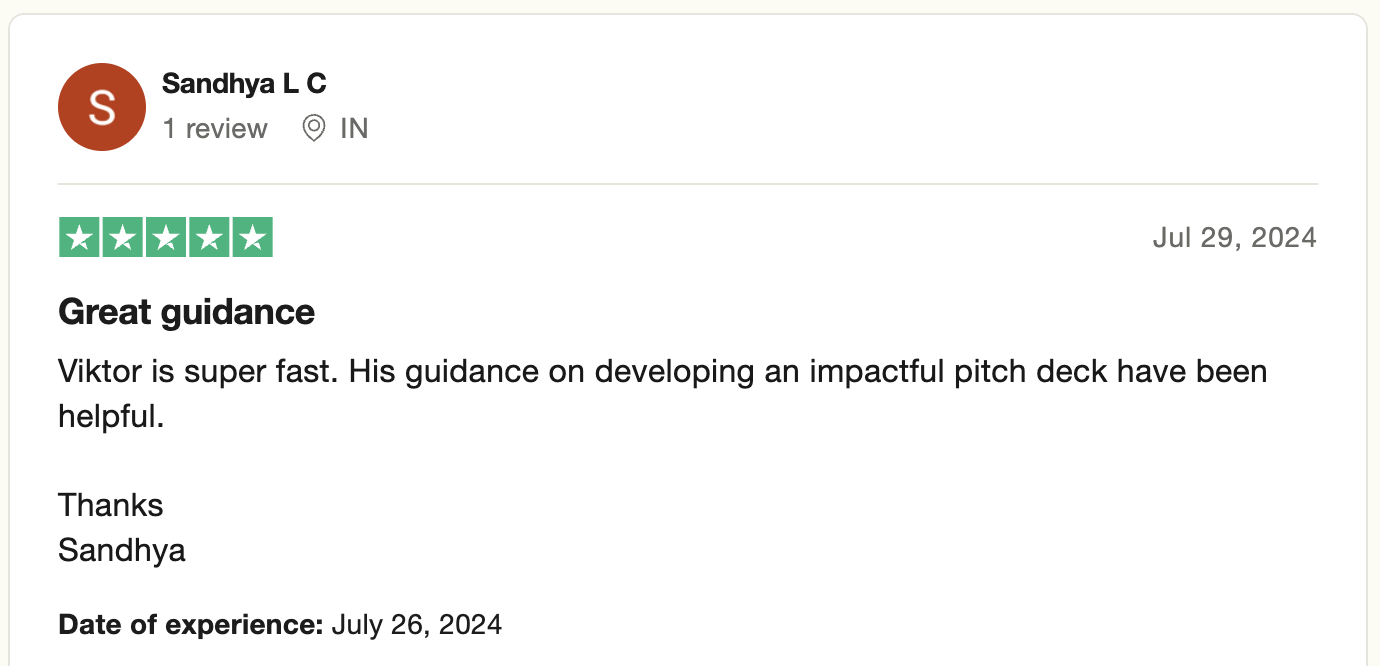
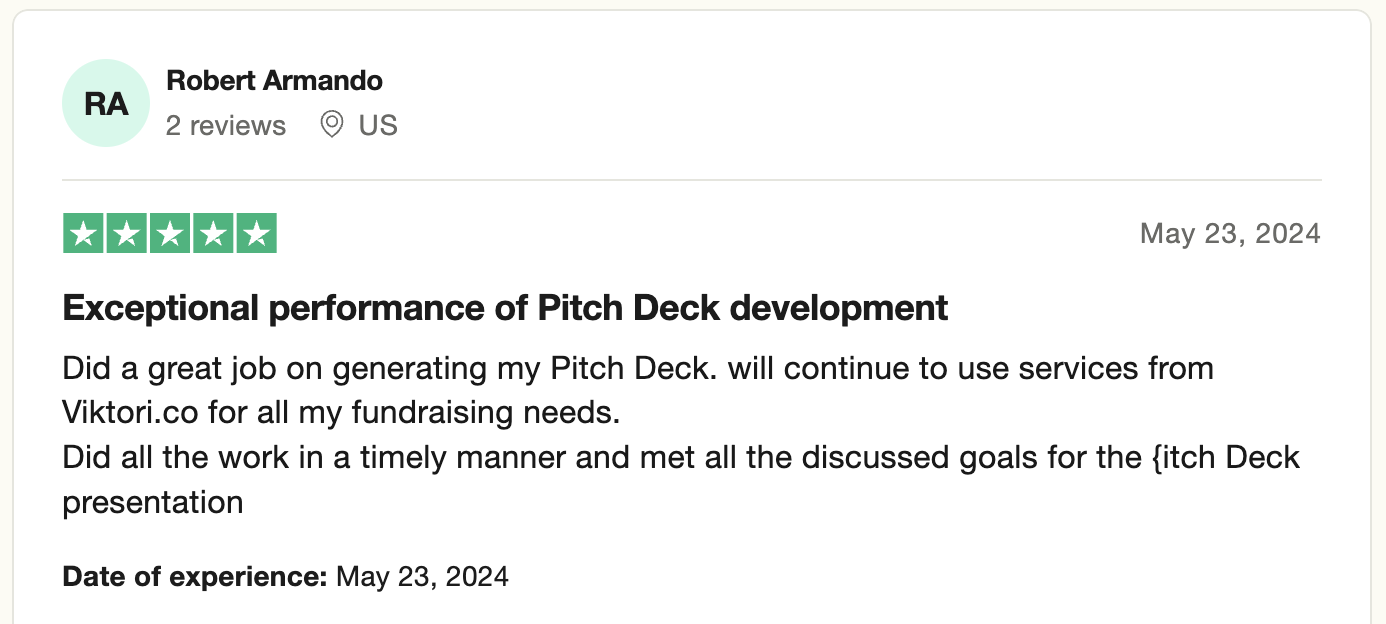
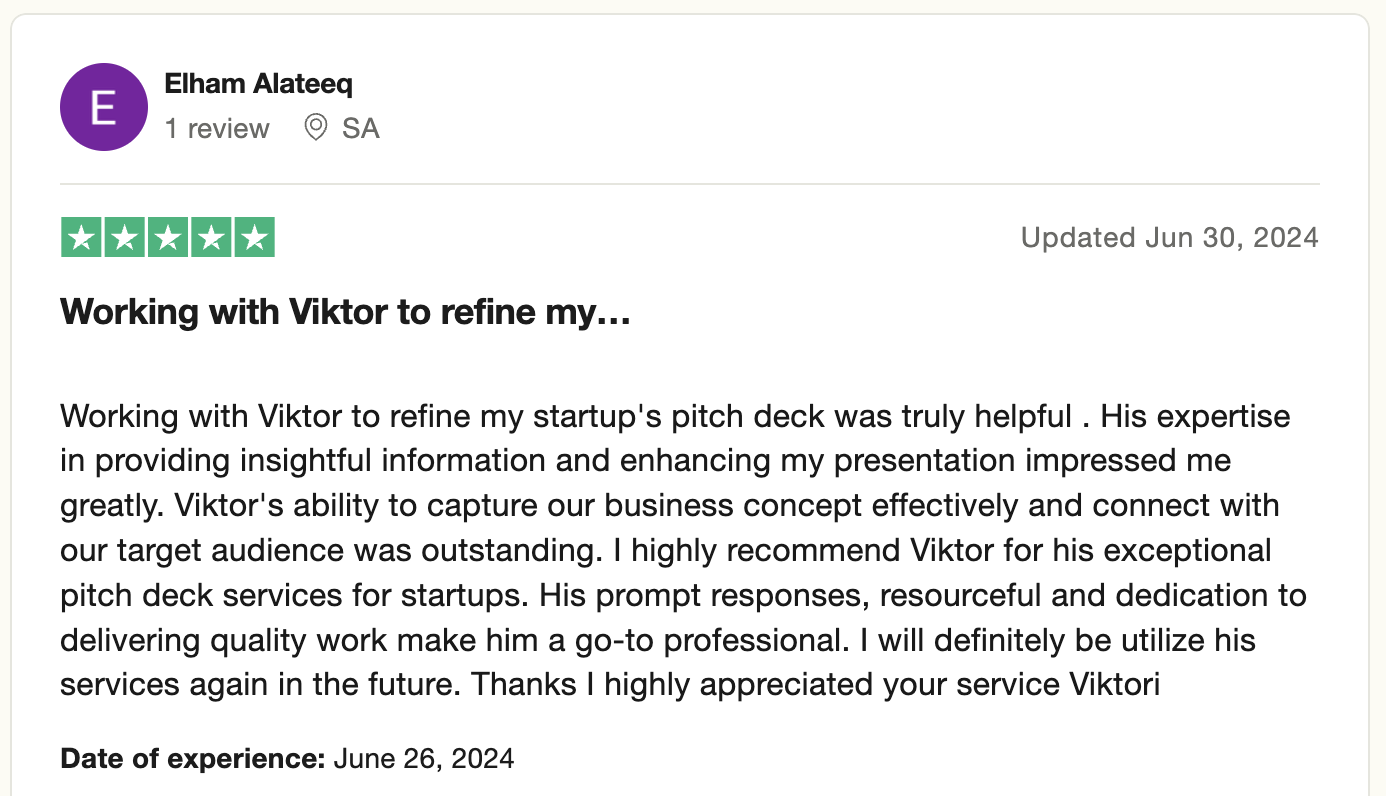
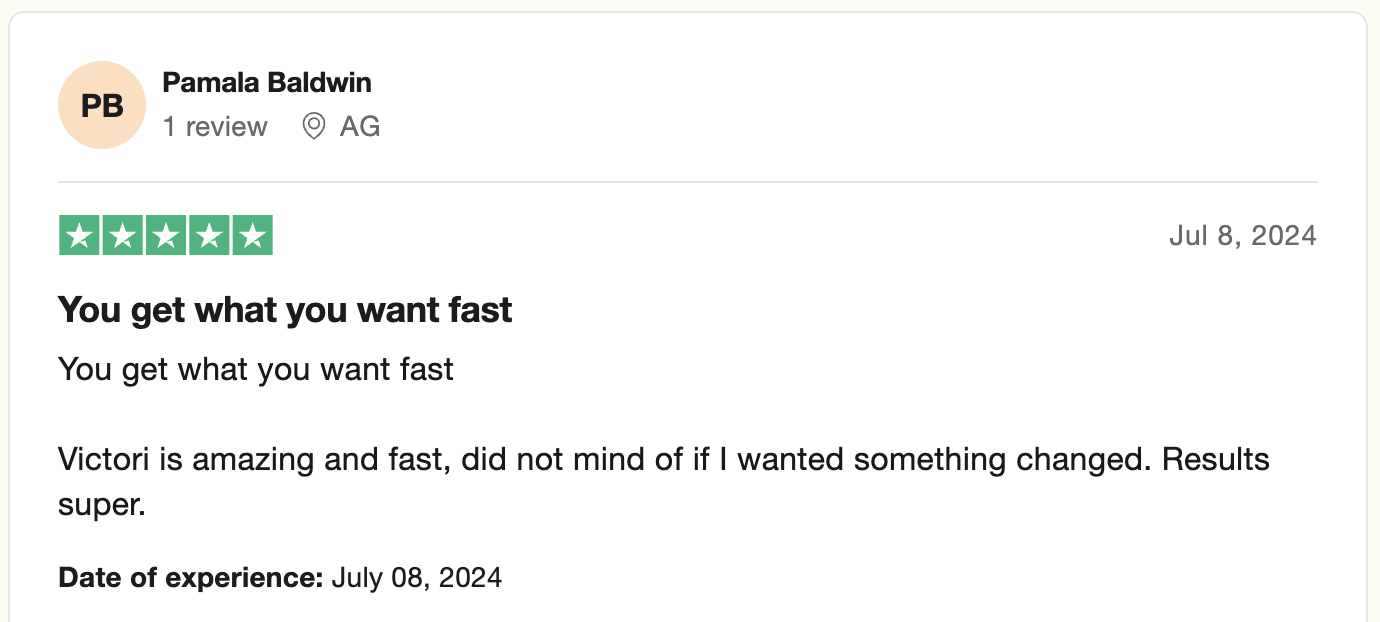
Alternatively, book a call and you’ll brief me on the specifics of your pitch.
Book The Free 30 Min Call
5/5 Upwork Rating | 100% TrustPilot

Plan on building the pitch deck yourself?
Option 1: Build with Gamma
Gamma is the preferred Ai presentation maker and if you’re strapped for resources, this tool will help you flesh out an ok pitch deck presentation. Here’s how it looks:
Option 2: Do It Yourself
If you’ve done a few presentation in the past, then this is the option you should take. Follow these simple steps:
- Pick one of the premium Envato templates by clicking on the image below,
- Answer the slide by slide questions I listed in the section below the image
- Follow the pitch deck guide I linked out to, next to the questions,
And build your own deck. It’s as easy as that.
Key Questions to Ask Yourself And Write The Biotech Pitch Deck Slides
Slide 1: Elevator Pitch (Problem + Solution)
- What is the core problem your biotech company is solving?
- How severe is the problem (patients impacted, economic burden, mortality rate, etc.)?
- What is your solution, and how does it work?
- Why is your approach different or better than existing solutions?
- What is the one key benefit your innovation provides (faster treatment, cost reduction, higher success rate)?
Slide 2: Investor Highlights
- What makes this an attractive investment opportunity right now?
- What is the size of the market you are targeting?
- What are the key competitive advantages of your technology?
- What stage is your product in (preclinical, Phase 1, Phase 2, etc.)?
- Do you have any regulatory approvals, patents, or designations (e.g., FDA Fast Track, Orphan Drug Status)?
- What partnerships or collaborations have you secured?
- What is your planned exit strategy (M&A, IPO, licensing)?
Slide 3: The Problem & Urgency
- What is the core problem your company is solving?
- What are the current solutions, and why are they inadequate?
- What are the consequences of inaction (in terms of human health, economic burden, industry impact)?
- Why does this problem need to be solved now (new regulatory changes, tech advancements, pandemic-driven urgency, etc.)?
- What data or case studies can demonstrate the real-world impact of this problem?
Slide 4: Market Opportunity
- What is the Total Addressable Market (TAM) for your solution?
- What is the Serviceable Available Market (SAM) and Serviceable Obtainable Market (SOM)?
- What industry trends are driving market growth (aging population, rising chronic disease prevalence, regulatory shifts, etc.)?
- Who are the key players in the space, and what market gaps exist?
- What is the expected adoption rate for your solution?
- What external factors (competition, regulatory environment, payer landscape) could impact market growth?
Slide 5: The Science & Unique Solution
- How does your technology work in simple, non-technical terms?
- What scientific breakthrough or technological edge do you have over competitors?
- What makes your approach safer, faster, more effective, or more affordable than alternatives?
- What preclinical or early clinical data can you show to validate your technology?
- What is the regulatory pathway for your technology (e.g., gene therapy, diagnostic, medical device)?
- What patents, trade secrets, or proprietary advantages protect your innovation?
Slide 6: Competitive Advantage & IP Strategy
- Who are your top competitors, and how does your solution compare?
- What are the barriers to entry for competitors?
- How many patents do you currently have, and how strong is your IP portfolio?
- How does your regulatory status give you an advantage over competitors?
- What risks do competitors pose, and how do you mitigate them?
- What exclusive partnerships, research collaborations, or licensing deals do you have?
Slide 7: Business & Revenue Model
- How does your company make money (drug sales, licensing, SaaS, partnerships, etc.)?
- What is your pricing strategy (per treatment, per test, per subscription, etc.)?
- Who are your primary customers (hospitals, pharma companies, insurers, direct-to-consumer)?
- What is your strategy for securing reimbursement from insurers?
- What is your expected revenue in 3-5 years?
- What partnerships will help you scale revenue quickly?
Slide 8: Clinical Trials & Regulatory Pathway
- What is the current stage of development (Preclinical, Phase 1, Phase 2, etc.)?
- What are the key regulatory steps required for approval (FDA, EMA, MHRA, etc.)?
- What major regulatory designations have you secured (Fast Track, Orphan Drug, Breakthrough Therapy, etc.)?
- What challenges do you anticipate in clinical trials, and how do you plan to overcome them?
- What is the timeline for clinical trials and regulatory approval?
Slide 9: Traction & Milestones
- What major milestones have you achieved so far (funding raised, trials started, partnerships signed, patents filed)?
- What early traction validates your business (customer interest, clinical success, licensing deals)?
- What funding or grants have you received?
- What partnerships have you formed with research institutions, pharma, or hospitals?
- What are your next major milestones, and what funding/resources are needed to achieve them?
Slide 10: Go-to-Market Strategy
- What is your initial market entry strategy (B2B, B2C, licensing, partnerships)?
- Who are your first customers or partners, and how will you onboard them?
- What is your sales and distribution model (direct sales, pharma partnerships, distributors, digital platforms)?
- What regulatory and reimbursement approvals will be required for commercialization?
- What is the long-term plan for scaling and expanding into new markets?
Slide 11: The Team
- Who are the founders, and what relevant experience do they have?
- Who are the key team members, and what expertise do they bring?
- What industry experts, advisors, or board members are supporting the company?
- What key hires are planned in the next 12-24 months?
Slide 12: Funding Ask & Use of Funds
- How much funding are you seeking in this round?
- What will the funding be used for (clinical trials, hiring, manufacturing, regulatory costs, etc.)?
- How long will this funding last, and what milestones will it help achieve?
- What is the expected return for investors (ROI, exit opportunities, potential IPO or acquisition timeline)?
- What are the risks associated with this investment, and how are they mitigated?
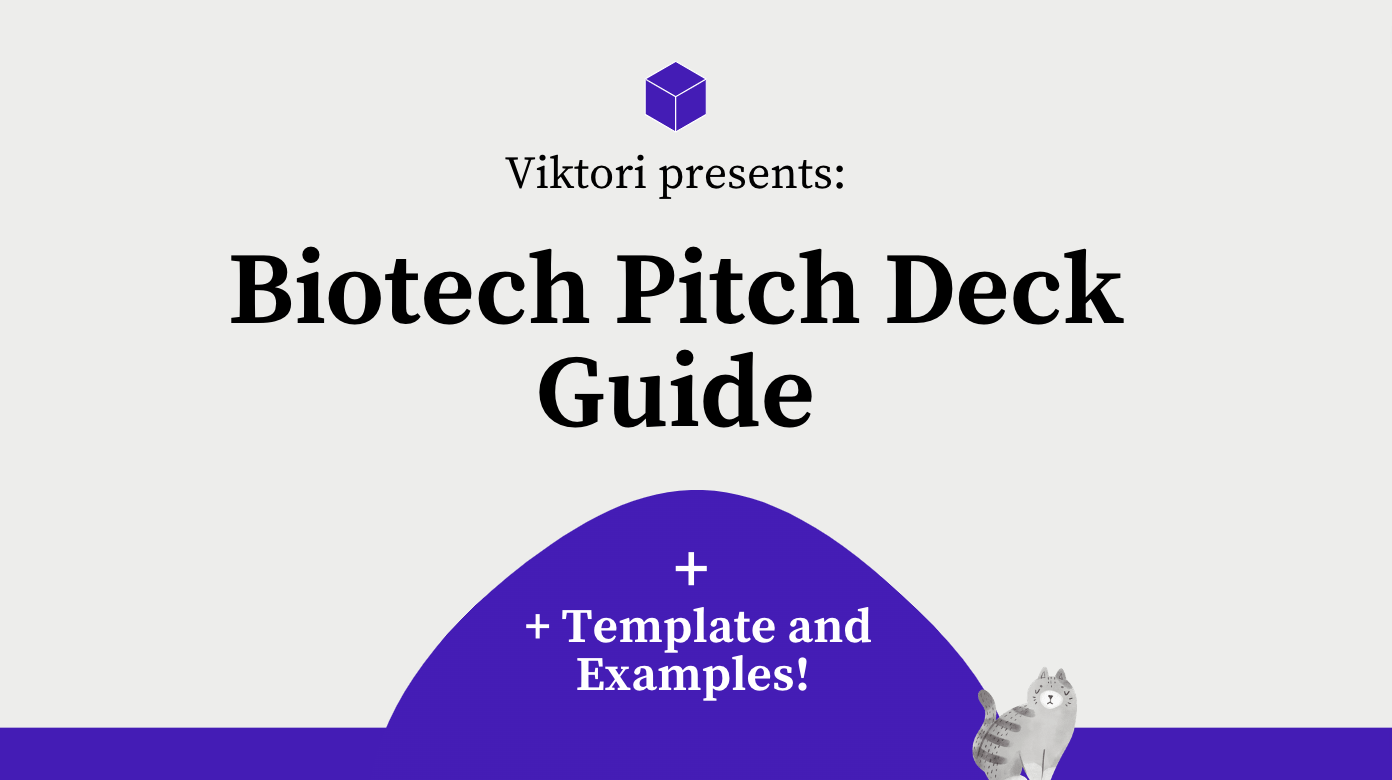
Follow My Biotech Pitch Deck Guide
A detailed guide with the steps outlined to get to a investor ready deck.
Alternatively, book a call and get the full pitch deck done. Hands-off.
Slide by Slide Guides

Mastering the Financial Projections Slide: Turning First Impressions into Lasting Opportunities
Read More »Viktori. Pitching your way to your next funding.
Locations
Office 1: 633 North Wells Street Chicago, IL, United States, 60654
HQ: Boulevard P.O. 10000 Skopje, North Macedonia
Pitch Deck Resources
Case Studies
Client Reviews


